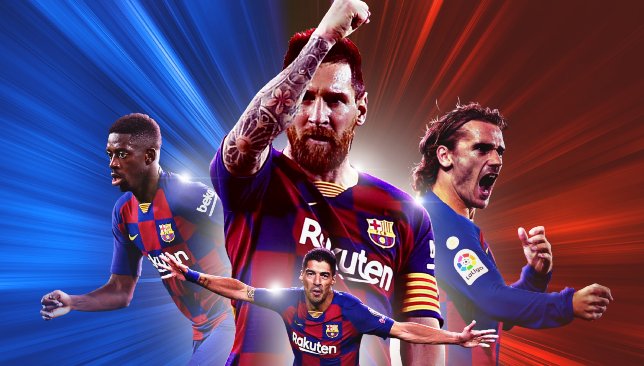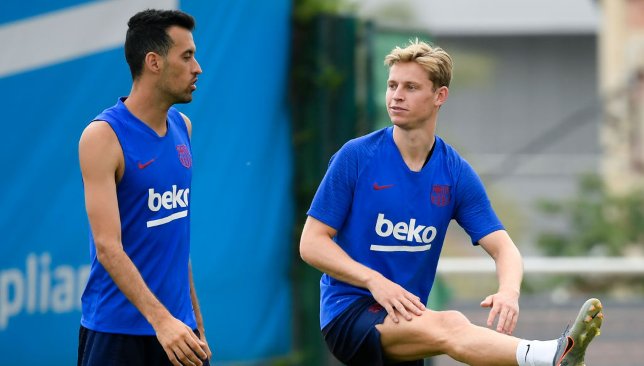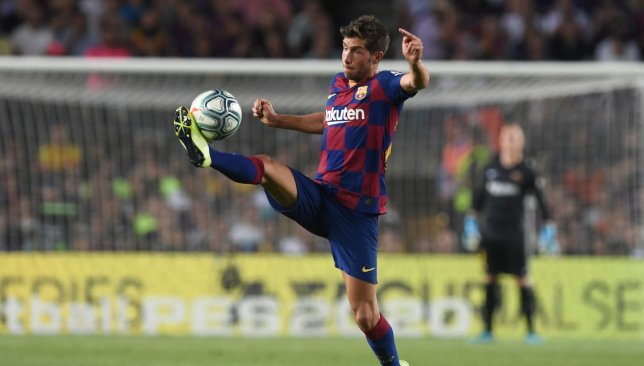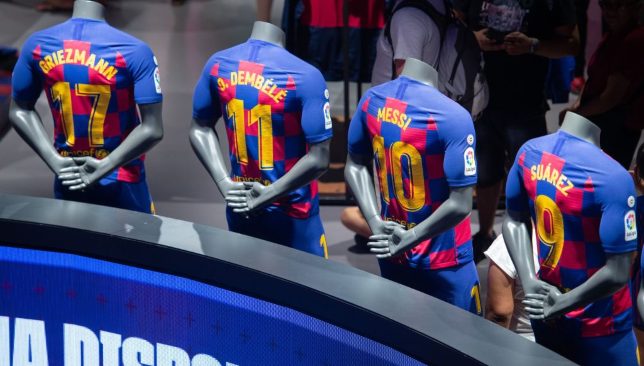
Barcelona have a rich history of playing fluid attacking football, are the reigning Spanish champions and boast a wealth of technically gifted players.
Yet, the La Liga giants have been rather hit and miss this season with the extent of their underwhelming performances only mitigated by the similar struggles of rivals Real Madrid and Atletico Madrid.
Early in the season for instance, they could only muster half the efforts at goal as newly-promoted Osasuna when they paid them a visit. The Catalans came away with a 2-2 draw, taking their points tally to five from a possible 12 at the time.
The caveat remains that Lionel Messi, Luis Suarez and Ousmane Dembele were all missing through injury for that encounter. But while some suggested Ernesto Valverde could hide behind their absence, the truth is that the shortcomings of his approach were never more exposed.
Good systems and styles of play transcend personnel. Yes, a drop in performance is inevitable if key players are absent but the functionality should largely remain consistent.
After deploying a compact 4-4-2 formation in his first season – that made Barca purists wince – Valverde had found the necessary balance to compensate for defensive shortcomings. However, the same vulnerabilities began to reappear last term.
Meanwhile, with fans, and quite possibly the club hierarchy, urging Valverde to play a more attacking brand of football, he’s succumbed this season and opted for an on-brand 4-3-3 system.
Yet, that is neither here nor there. It’s a compromise which serves no one.
Results have improved in recent weeks but none have been entirely convincing. A 4-0 win at home to Sevilla was the outlier but even that result was slightly flattering.
Valverde has fumbled around for the right formula while seemingly married to a 4-3-3 set up. There may, though, be another system which is more suited to this Barcelona side and extracts the most out of their players.
Here, we make a case for the 4-2-3-1 formation.
THE DOUBLE PIVOT

Frenkie de Jong is one of the most gifted midfielders in the game but his start at Barcelona has been underwhelming, though through no fault of his own. He’s shown glimpses of brilliance but in certain games he’s been asked to play more advanced to accommodate Sergio Busquets as the anchorman.
De Jong’s ability to drop alongside the centre-backs and either pass or carry the ball out from defence is wasted if he’s not in a position to do so. A double pivot in midfield would see both Busquets and De Jong benefit from deeper roles.
The veteran would bring experience and stability at the core while De Jong’s mobility ensures gaps are plugged and space is exploited in possession.
For Valverde, the system provides the defensive assurance he craves without the limitations of a 4-4-2 formation. From a spectator’s perspective it does allow for more freedom further up the pitch.
There are also options to tweak the approach with personnel changes. Valverde has Ivan Rakitic, Arthur and Arturo Vidal to choose from, each offering a different skill set.
ROBERTO’S ROLE

Sergi Roberto divides opinion, not only in terms of his ability but also his position. A central midfielder by trade, he’s always looked like a square peg in a round hole when deployed at right-back.
However, his ability to retain possession and his positional sense makes him a steady option in that role, even if the attacking aspects of it are often lost on him.
The good news is, Roberto needn’t concern himself with actions in the final third within this system. That can be left to the expertise of the front four and the marauding Jordi Alba.
Instead, Roberto would be tasked with maintaining shape and equilibrium while the attacking players run riot.
When the Catalans attempt to play the ball out from the back, the 27-year-old would likely hug the touchline to provide an out-ball, much like Alba would on the opposite flank.
However, during a prolonged period of possession, he would tuck into central midfield, making it a 2-3-1-4 formation in that phase. That helps the Catalans keep the ball and maintain pressure on the opposition.
Crossing may not be Roberto’s greatest strength but he can play a diagonal ball and switching play from right to left, most likely finding Alba, would be a useful ploy.
Finally, when the ball is lost, Roberto is in a position to drop and form a back three in the transition, guarding the Blaugrana against a counter-attack. Essentially, his role lends Barca control in possession and stability in the transition.
FEARSOME FRONT FOUR

For Barcelona to capitalise on the wealth of attacking talent at their disposal, all four of their star forwards need to be on the pitch. This could be the system within which Messi, Suarez, Griezmann and Dembele not only co-exist but thrive.
First, and most crucially, it maintains Messi as the central figure in attacking midfield from where he can continue to orchestrate proceedings masterfully in the final third while posing a significant goal threat.
Everything will flow through him and the Argentine can operate freely with the security of the double pivot behind him, who not only offer defensive assurances, but can also feed him the ball between the lines.
That’s precisely where the 32-year-old will look to exploit space with the other three attackers working in tandem to pin the defence back and afford him more room.
Griezmann would operate coming in from the right and perhaps even swap with Messi on occasion while his presence in and around the box gives Suarez another quality option to link-up with, ensuring he’s not isolated.
Dembele brings an X-factor into the mix. If defenders focus too much on the movements of Messi and Griezmann, they may lose sight of the dangerous Frenchman who has all the necessary weaponry to punish them.
And just when the opposing right-back thinks he has him covered, Alba storms down the outside from where his trademark cut-backs can be swallowed up by Messi arriving late into the box.
The possibilities for that attack are endless when every member is fit and firing, but even when a couple are rested or sidelined by injury, there are some exciting young talents to step in like Ansu Fati, Carles Alena and Carles Perez.